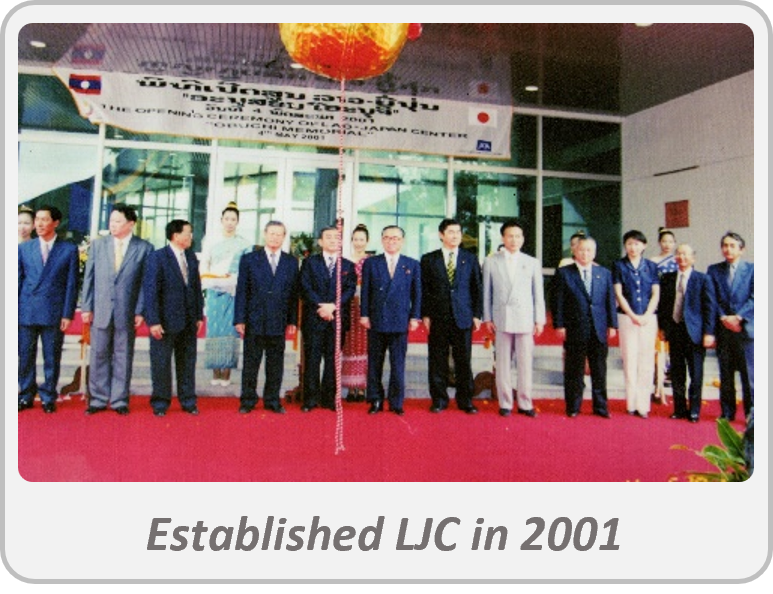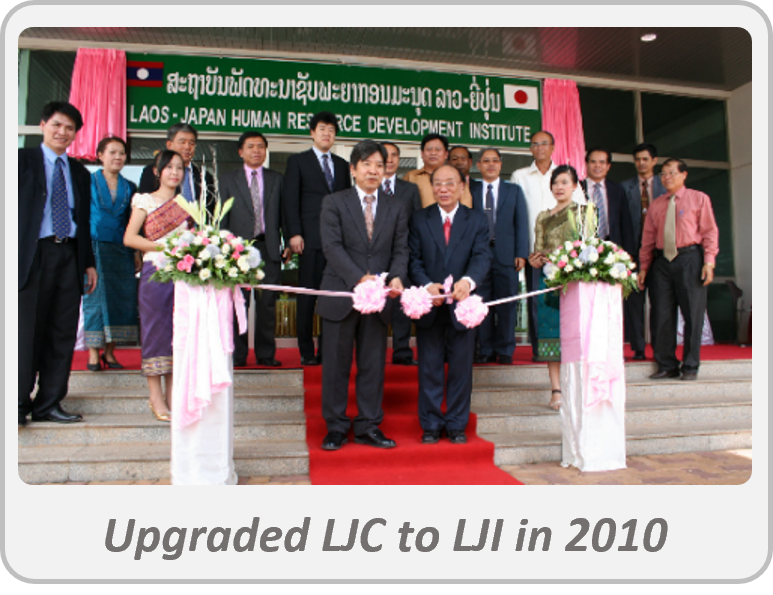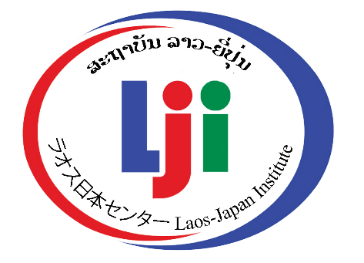History of LJI
Under the Socialist Regime, the Lao Peoples’ Democratic Republic had a planned socialist economy with state enterprises and cooperatives until 1986 when the New Economic Mechanisms (NEM) were introduced. Since then, the market economy is growing but it has become an increasingly urgent task to train human resources to compete in the ASEAN market with skills in modern industrial technology and practical management for the market economy.
In January 2000, for the first time in 33 years Japanese Prime Minister Keizo Obuchi made an official visit to Laos to support their transition period to a market economy. Japan promised to help advance human resource development through the exchange of persons from and to both nations. Thereafter, the Laos-Japan Human Resource Development Center was proposed as a base for this relationship.
The development of Laos-Japan Institute can be seen in four different phases with specific characteristics as follows:
First phase (May 2001 – August 2006):
The activities were limited in scope including business management training, Japanese language training, cultural exchange programs and library services. This phase was characterized by a boom and decline in the business management training course.
Lao PDR started rapid transformation from the centralized economy towards the market-oriented economic development since the early 1990s. However, during those years, many business persons and managers in the public sectors did not have sufficient modern management knowledge and skills. They managed their works based on trial and error. The launch of modern business management training programs attracted a large number of participants. However, after several years of program operation, the number of participants declined, urging top management of Laos-Japan Institute to adjust the programs for meeting the demand in society.
Second phase (September 2006 – August 2010):
In this phase, the programs at Laos-Japan Institute were modified greatly to meet the society’s needs. The master degree of business administration (MBA) program was established in 2008, Study in Japan Fair was initiated in 2007, Honda Award for Young Engineers and Scientist program was commenced in 2009, the on-site consultation on management program was initiated in 2007, business forums were also added.
Due to such activity expansions, Lao-Japan Center was upgraded to Laos-Japan Institute on May 11, 2010. Such expansion in activities of Laos-Japan Institute was a very crucial condition for JICA to extend its support to Laos-Japan Institute in the third phase.
Third phase (September 2010 – August 2014):
This phase was an extension of the second phase for improving the existing activities as well as adding action research and supporting Japanese investments in Laos. During this phase, Japan Foundation also established Japan Foundation Language Center in LJI, making Japanese course activities become more intensified.
Japanese language proficiency test was also initiated in this phase.
Fourth phase (September 2014 – August 2019):
In this phase, supports to Japanese companies in Laos are enhanced through organizing job fairs, business seminars, business matching and capacity building. In this phase, LJI activities are not confined only in Vientiane Capital, but some activities are extended to other provinces particularly Savannakhet.
More research activities are also added along with case study development in this phase aiming to establish LJI as a think tank of business and investment environments in Laos for Japanese and Lao companies. Case studies will also enhance practical aspects of the education programs at LJI so that the participants will gain practical knowledge and experiences from LJI. Recent development in this phase includes the launches of keiei-juku program, Start-Up program and LJI Business Café.





